For this assignment, I chose to do the beginner level because I have never used molding and casting methods.
To start creating my mold, I mixed alginate with water in a 1:1 ratio. After stirring with a popsicle stick for a few minutes to ensure even mixing, I stuck my pointer and middle fingers into the mixture. I kept my fingers in the mixture for about 5 minutes and then carefully removed them when I started to feel some slight resistance from the mold.
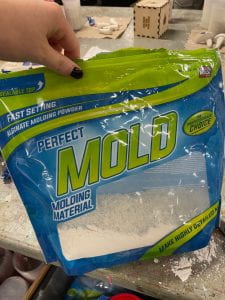
alginate used to make mold
Now that I had my mold, I moved on to make the plaster mixture. In a smaller cup, I mixed Plaster of Paris and water in a 2:1 ratio. After stirring for a few minutes, I poured the plaster into my finger molds. As I poured, I gently tapped the mold to prevent air bubbles from forming.
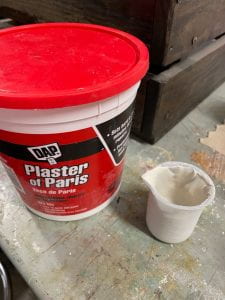
Plaster of Paris
Next, I worked to attach a screw to each finger. To do this, I used tape to secure the tips of the screws to a popsicle stick. I then laid the popsicle stick over the top of my mold cup so that the screws hung over the mold and the heads of the screws submerged slightly into the plaster. I struggled a bit with getting the screws to hang low enough from the popsicle stick to actually reach the plaster fingers. Properly placing the screws required a bit of trial and error.
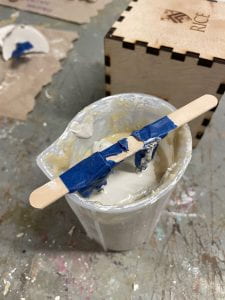
mold with plaster and screws
I let the plaster set for about 4 hours and then attempted to demold the fingers. Unfortunately, during my first attempt, I broke both of my fingers. I think this happened because I didn’t break the alginate mold enough, causing the fingers to break when I tried to pull them out.
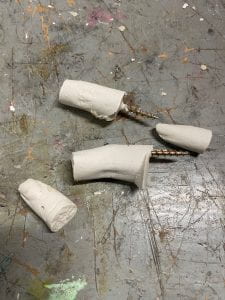
broken fingers 🙁
For my second attempt, I repeated all the steps for making the alginate mold, mixing the plaster, and attaching the screws. After making my second mold, I let the plaster set for about 3 hours. This time, when I demolded the fingers, I first removed the entire alginate mold from the cup. Then I used a pair of scissors to help slice open the alginate to reveal the set fingers. This method of demolding worked a lot better and I was successful in retrieving two plaster fingers.

alginate mold removed from cup

demolding the fingers
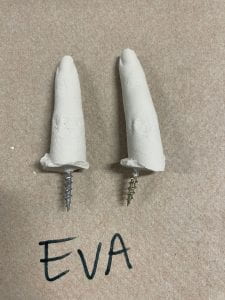
demolded fingers
After I demolded the fingers, I used a file to shave off some of excess plaster around the base of the fingers. Then I used gold spray paint, followed by a clear coat, to finish the fingers.
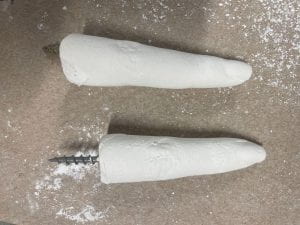
fingers after filing
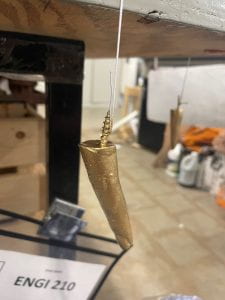
spray painted finger

finished finger with a golden touch
Even though I had to remake my fingers, this project was pretty quick and easy to do. It was fun to see the ENGI 210 table fill up with fingers, and I am really happy with how my gold finish turned out.

clean workspace
Cost Analysis:
- 150 mL of alginate, costing $13.99/28oz = $2.49 (Joann)
- 2 oz of plaster of Paris, costing $7.99/4lb = $0.25 (Michaels)
- 1 oz of gold spray paint, costing $6.98/11 oz can = $0.63 (The Home Depot)
- 1 oz of clear coat, costing $6.48/12 oz can = $0.54 (The Home Depot)
- 2 hours of labor, costing $15/hr = $30
Total Cost: $33.91
